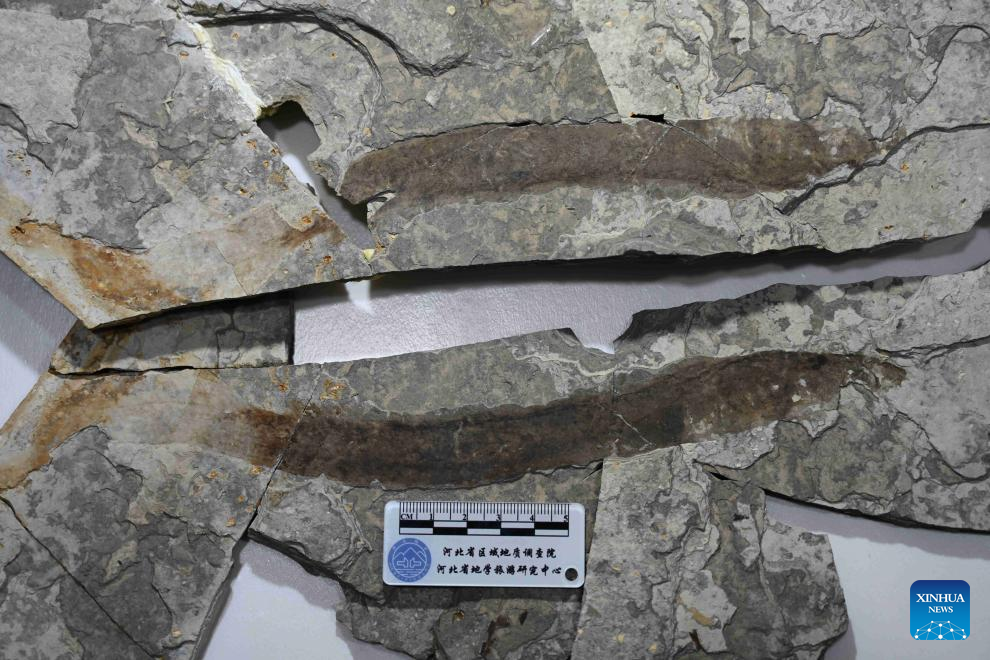
This photo taken on Feb. 28, 2024 shows a fossil of an extinct lamprey found in Fengning Manchu Autonomous County, north China's Hebei Province. (Xinhua)
SHIJIAZHUANG, Feb. 29 (Xinhua) -- A fossil of an extinct lamprey that can date back 134 million years, was found in Chengde, a city in north China's Hebei Province, according to the provincial department of natural resources on Thursday.
The fossil was later identified as the extinct species Mesomyzon mengae Chang by Zhang Jiangyong, a researcher from the Institute of Vertebrate Paleontology and Paleoanthropology, the Chinese Academy of Sciences.
This discovery, made in Fengning Manchu Autonomous County, marks the first time such a lamprey species has been unearthed in Hebei. It indicates that Mesomyzon mengae Chang had a broader geographical distribution, extending beyond Inner Mongolia and the western part of Liaoning to include the northern part of Hebei.
Mesomyzon mengae Chang fossils are reportedly extremely precious due to the absence of hard bones and scales. It was once considered the only known jawless fossil since the Mesozoic era. ■

This photo taken on Feb. 28, 2024 shows fossils of extinct lampreys found in Fengning Manchu Autonomous County, north China's Hebei Province. (Xinhua)



